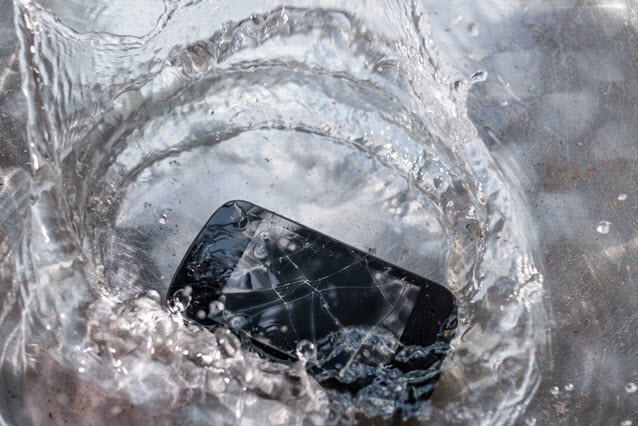5 Tips to Help You to Prevent Major Cell Phone Water Damage
Your cell phone holds your contacts, your calendar, your financial account information and so much more. So if you drop your cell phone in a pool or if it comes in contact with another water source, chances are you’ll panic right away.
Cell phones are electronic devices and, like any electronic device, water is the enemy. It doesn’t matter how careful you are, mistakes happen. With quick action, however, you can potentially revive your phone and prevent permanent damage.
Before getting started, remove your phone from water as quickly as possible. The longer it remains submerged, the greater the risk of damage. Quick removal can prevent water from seeping into the phone’s tiny crevices. Once it’s out of the water, immediately turn off the phone. Even if the phone appears to be working properly, turning it off can prevent short circuiting and further damage.
Once you’ve got those crucial steps out of the way, the protective steps can begin.
1. Remove the protective casing.
After removing the phone from water and turning it off, remove any protective casing from around the phone. This is important because water can settle in between the case and the phone, making it harder to dry.
Lay the phone on top of an absorbent cloth and remove the battery so it can dry out. Keep in mind that some cell phones do not allow for easy battery removal, so you might need to read your user’s manual for instructions.
You should also remove the SIM card, if your phone has one. If you can remove the SIM card and dry it off with a cloth, you can protect your information. Even if the phone dies, you can put your card into a new phone and retrieve your information.
2. Use a cloth to wipe off the phone.
Take the absorbent cloth and wipe as much of the water from the phone as possible. Pay special attention to areas around buttons, as well as the headphone jack and the charging jack.
3. Use a vacuum to remove excess water.
If you have a handheld vacuum with small attachments, hook up the attachment and use the vacuum to suck water from crevices around the phone. Some people use a hair dryer to dry out a phone, but this isn’t recommended. A hair dryer could push moisture into the phone, making the situation worse.
4. Place the phone in a bag of rice overnight.
Once you’ve removed as much water as possible, fill a plastic bag with rice or silica gel and place the phone inside the bag overnight. Leave the phone in the bag for up to 24 hours. This technique helps absorb any remaining moisture from the phone.
5. Put the phone in the sun for additional hours.
After removing the phone from the bag, you’ll need to dry it out for an additional four to six hours. Lay the phone on a cloth and place it in a sunny spot. After a few hours, test out the phone. Reinstall the battery and SIM card, and turn it on.
If the phone doesn’t work, it might need power. Plug it into a power source to charge up the battery. If the phone turns on—great, you’ve just saved yourself some money. Monitor the phone over the next few days to ensure there are no problems.
If you have problems with the phone, or if the phone doesn’t turn on after drying out, you might need a new battery—or worse, a new phone. See a cell phone repair shop to discuss your options.
Dropping your cell phone in water can be devastating, especially given the cost to replace a phone. But with quick action and the right knowledge, you can potentially rescue your phone and have it up and running in less than 24 hours without spending a dime.
